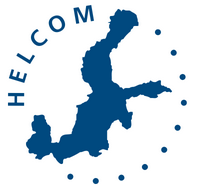HELCOM work on (MPAs) took a major leap forward as the new Recommendation on coastal and marine Baltic Sea protected areas was adopted earlier this month (). Protected areas are essential for maintaining healthy biodiversity and ensuring the versatility of ecosystems. The primary reason for creating the new Recommendation is the need to update selection criteria of marine protected areas. Such improved criteria are now possible due to recent major HELCOM work to define at risk of extinction, as well as
threatened by collapse in the Baltic Sea. Another essential feature is that the network of HELCOM MPAs aims to be ecologically coherent, in other words that the collection of sites protects the full range of biodiversity in the region. Moreover, the contents of management plans for the protected areas require urgent attention. The area of HELCOM marine protected areas has increased threefold since 2004 and now covers about 12 % of the marine area, thereby exceeding the target of 10 % set by the Convention on Biological Diversity, confirms the HELCOM Overview published last year. The Baltic Sea was one of the first regional seas in the world to reach this target. However, little progress has been made to include more off-shore areas under the protection regime, and the network of protected areas is not yet ecologically coherent in spite of the HELCOM target set three years ago. The newly adopted Recommendation incorporates all Baltic Sea sub-basins within the 10 % protection coverage target. Further, new management plans are needed: currently, 106 HELCOM MPAs (65% of the total) have a management plan in force; in 42 (26%) sites a plan is still inpreparation; and the rest – 15 out of 163 – have no progress for such a plan. The new Recommendation therefore reiterates that all MPAs should have a management plan by 2015 and that any new site should establish a management plan within five years of its designation. Moreover, the new Recommendation stipulates that the database for HELCOM MPAs will be modernized to facilitate the reporting and assessment of protected areas. And along with the new Recommendation, a new acronym has also been adopted: from now on, instead of the former BSPAs (Baltic Sea Protected Areas) the coastal and marine Baltic Sea protected areas will be known as HELCOM MPAs. * * *Note for editors:, which is one of the HELCOM Working Groups involving all the Baltic coastal states, works to conserve and protect biodiversity, species and habitats of the Baltic Sea. HABITAT promotes the sustainable use of living marine resources and aims to ensure that the environmental protection needs are duly considered in different activities that affect the marine environment, by using tools such as spatial planning and environmental impact assessments. The Baltic Marine Environment Protection Commission, usually referred to as , is an intergovernmental organisation of the nine Baltic Sea coastal countries and the European Union working to protect the marine environment of the Baltic Sea from all sources of pollution and to ensure safety of navigation in the region. Since 1974, HELCOM has been the governing body of the ‘Convention on the Protection of the Marine Environment of the Baltic Sea Area’, more commonly known as the Helsinki Convention. * * *For further information, please contactJanica BorgProject Researcher (PROTECT)HELCOM Tel: +358 40 662 0101 E-mail: janica.borg(@)helcom.fiSkype: helcom57 Johanna Laurila Information Secretary HELCOM Tel: +358 40 523 8988 E-mail: Skype: helcom70
New Recommendation on coastal and marine Baltic Sea protected areas was adopted earlier this month.
